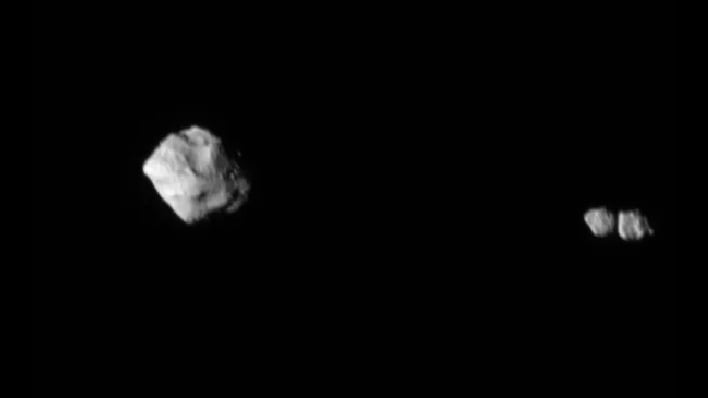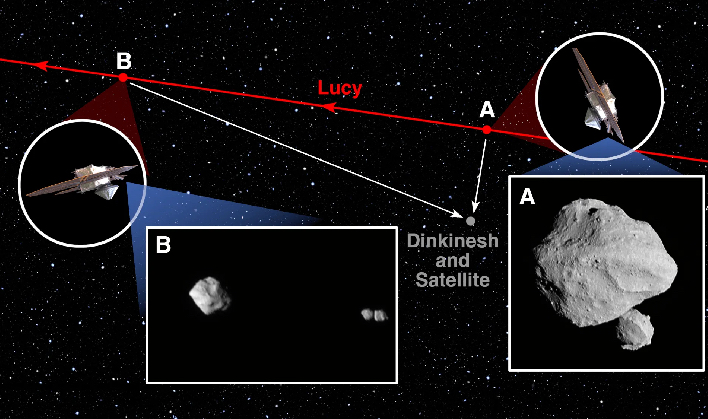NASA's Lucy Probe Surprises Again With A Bizarre Asteroid Flyby Discovery

Lucy is on a 12-year mission that will take the spacecraft right into the midst of a belt of asteroids that circle the Sun between the orbits of Mars and Jupiter. The spacecraft was named after a fossilized skeleton of a human ancestor, which in turn was named for the Beatles song "Lucy in the Sky with Diamonds." The first data sent back from Lucy unveiled images of asteroid Dinkinesh and its satellite. After downloading additional images, the team at NASA discovered that the satellite asteroid was a contact binary.
"Contact binaries seem to be fairly common in the solar system," explained Jonh Spencer, Lucy's Deputy Project Scientist. "We haven't seen many up-close, and we've never seen one orbiting another asteroid. We'd been puzzling over odd variations in Dinkinesh's brightness that we saw on approach, which gave us a hint that Dinkinesh might have a moon of some sort, but we never suspected anything so bizarre!"

"It is puzzling, to say the least," remarked Hal Levinson, Principal Investigator for Lucy. "I would have never expected a system that looks like this. In particular, I don't understand why the two components of the satellite have similar sizes. This is going to be fun for the scientific community to figure out."
The second image was captured around 6 minutes after the closest approach from a distance of about 1,010 miles (1,630km). Lucy traveled approximately 960 miles (1,500km) between the two released images.
The team continues to download and process the remaining data from the encounter. Dinkinesh and its satellite are the first two of 11 asteroids that Lucy is expected to investigate along its journey. The spacecraft is headed back toward Earth, where it get a gravity assist in December of 2024, before heading back to the asteroid belt.

